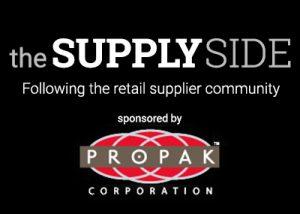The Supply Side: Omnichannel success takes more than online shopping
by May 9, 2017 11:47 am 343 views

Consumers once used shopping lists scratched out on paper. But by the time they now enter a brick-and-mortar store, many have already searched inventory online, checked prices and perhaps read product reviews.
The pre-shopping research creates omnichannel opportunities for suppliers and retailers, according to a recent report by marketer and analytics firm BrandView.
In-store grocery spending is projected to reach $400 billion by 2025, compared to $100 billion in online grocery. For today’s omnichannel shopper, retailers and suppliers need strategies for both, and that also mean mobile.
Omnichannel shoppers spend more money, according to Lucy Smith, senior product manager at BrandView and co-author of the report. She noted they spend 4% more each time they are in a store and 10% more when shopping online.
BrandView said having multiple channels (mobile applications and click and collect) are also beneficial for retailers because the payback is up to 9% incremental spending when they are in the store. Regardless of a retailer’s store strategy, they must also think about winning online, and much of that requires the cooperation of product suppliers. The report said in-store shoppers also want to be able to discover products online, so having a searchable website, user friendly and available in a mobile application is a must. While the expense of maintaining and enhancing the online site falls to the retailer, it is the supplier that can make or break its success.
Smith said products online must have discoverability. It’s important shoppers find the products on the digital shelf when they enter a search. She said unless products return to the first page of search results, there is little chance the shopper will see them, much less buy them. BrandView said if the shopper can’t easily find what they are looking for online with a keyword search of the retailer’s site, they won’t stick around long, because it’s too easy to check another retail site. A product found in the first page listing from the initial search overwhelmingly outperformed products that did not. It’s like shelf placement in a store, consumers can’t buy what they can’t easily locate, the report states.
CONCISE CONTENT COUNTS
One test performed by BrandView showed true incidents where brand search terms returned competitors’ products. For instance, a search on the Fresh Direct site for a 2-liter bottle of Coca-Cola returned Pepsi. Upon closer look the Coca-Cola online content tag didn’t not include the terms “2-liter bottle.” Pepsi did.

Once a product is deemed easily searchable, the supplier needs to ensure the brand is properly represented in the listings, and the product name should be represented accurately and consistently across multiple retailers. BrandView said great online content must also include clear images which improves the opportunity for sales.
BrandView said too often there is missing product content which can affect discoverability online. For instance, BrandView found Frosted Flakes twin pack cereal sold on Walmart.com omitted the brand name “Kellogg’s,” the term “cereal” and the pack weight.
“Missing brand name, pack weight and category keywords from product title can affect discoverability, and be damaging to the brand’s integrity,” Smith noted.
BrandView recommends suppliers police the brand name, product name and key product information as well as monitor the product content databases in conjunction with the retailer websites. Suppliers need to ensure product name is compliant to retailers’ character limits and work with retailers to include full product descriptions on all listings. The content must be clear, consistent and contain the correct product imagery.
BrandView also monitors online performance among several retailers including Walmart U.S. The report found Wal-Mart had 71% compliance among its suppliers. Proper product name compliance was 81%, but just 61% were image compliant.
SHOPPER ENGAGEMENT
Suppliers who have the most success selling online also actively engage with shoppers, according to the report. The best way to engage shoppers with the brand online is to provide product reviews. If certain products are blighted with poor reviews, BrandView said the negative ratings can turn shoppers off buying a product. BrandView recommends suppliers monitor customer reactions closely because sometimes they are caused by some other dissatisfaction other than the product itself.
For instance, on the Petco website, BrandView found a review of a product bought in the store. The consumer said they purchased the product because it was on sale at their local store. They bought it to feed feral cats, that wouldn’t eat it. The review heading was “cats hate it,” and the consumer gave the product 1 star and did not recommend it.
By monitoring comments, the supplier could have responded quickly to the negative posts to try and appease the customer. BrandView also shared an incident where a product sold on PetSmart website had been reformulated, but the online content did not reflect the ingredient changes, which generated a negative review from a customer who was surprised by the changes in the product. While reviews are a great way to track the impact of a product reformulation, unless the content clearly states there is a change in the formula, customers may not get what they expected. Consequently, dissatisfied customers are likely to vent their frustration in negative reviews.
BrandView said suppliers need to understand how product reviews can affect product placement at the retailer. Negative reviews should be reviewed and action taken when possible because they can erode brand equity and push sales toward a competitor.
––––––––––––––––––––
Editor’s note: This story was first published in the May 1 edition of the Northwest Arkansas Business Journal. The Supply Side section of Talk Business & Politics focuses on the companies, organizations, issues and individuals engaged in providing products and services to retailers. The Supply Side is managed by Talk Business & Politics and sponsored by Propak Logistics.
